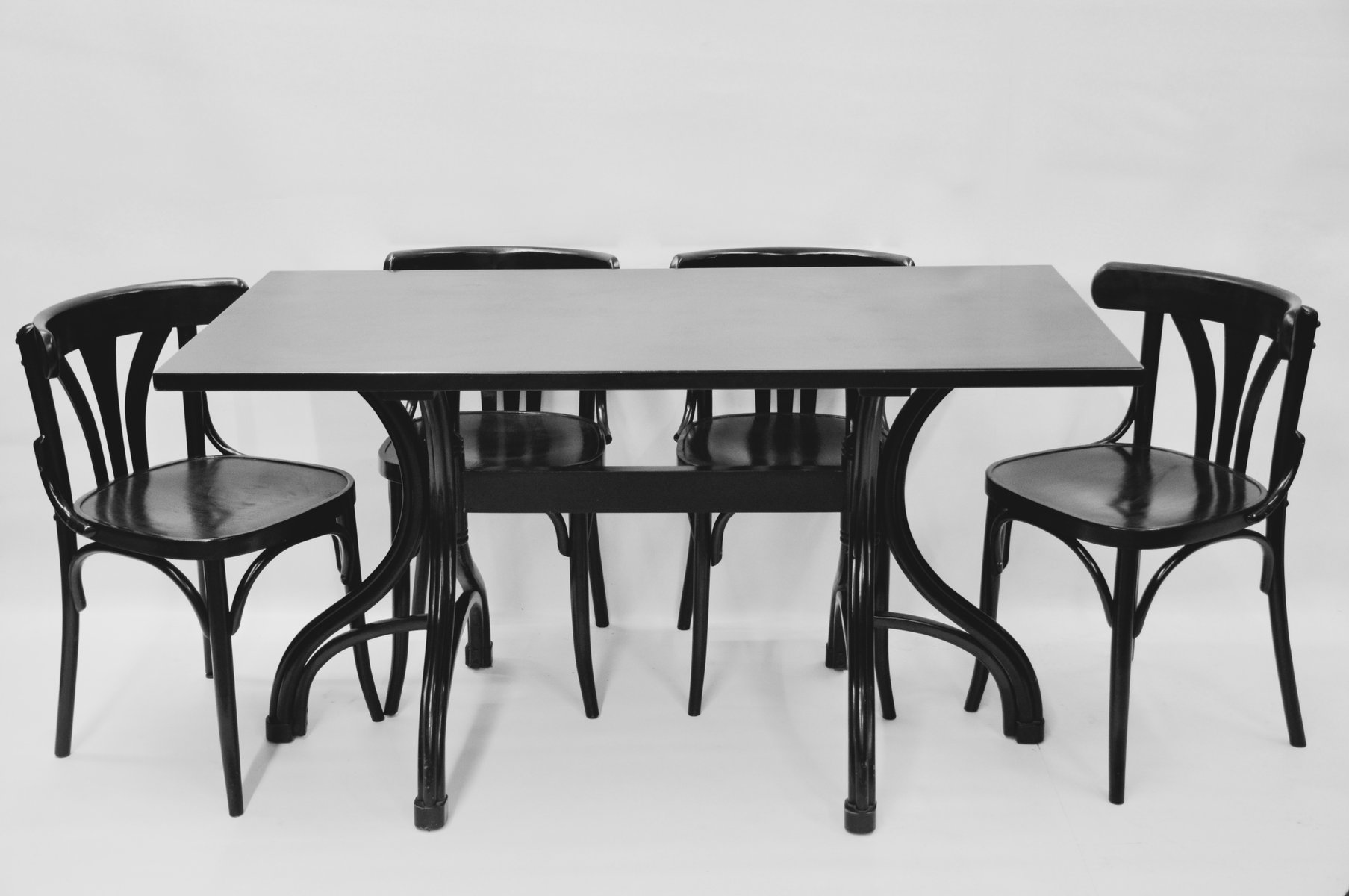The Allure of Bentwood: A Timeless Design

Bentwood furniture, with its graceful curves and enduring strength, has captivated design enthusiasts for centuries. This unique style, born from the ingenuity of artisans and the beauty of natural materials, continues to hold a special place in the world of furniture design.
The History of Bentwood Furniture
Bentwood furniture’s story begins in the 19th century, with the rise of industrialization and the invention of steam-bending technology. This innovative process allowed for the creation of furniture with complex curves and shapes, previously impossible with traditional woodworking techniques. Michael Thonet, an Austrian cabinetmaker, is credited with pioneering this method, and his iconic bentwood chairs, known for their elegant simplicity and durability, became a symbol of the era.
Aesthetic Qualities of Bentwood Furniture
Bentwood furniture possesses a distinctive aesthetic that sets it apart from other styles. Its defining feature is its elegant curves, achieved through the steam-bending process, which creates a sense of fluidity and grace. This natural curvature, combined with the use of high-quality wood, results in furniture that is both visually appealing and comfortable. The simplicity of the design, with minimal ornamentation, emphasizes the natural beauty of the wood and the craftsmanship involved in its creation.
Comparison with Other Furniture Styles, Bentwood multipurpose table and chair set
Bentwood furniture stands in contrast to other popular styles, such as Victorian furniture, known for its elaborate carvings and ornate designs. While Victorian furniture exudes a sense of grandeur and opulence, bentwood furniture offers a more understated elegance, characterized by its clean lines and natural beauty. Modern furniture, often featuring bold geometric shapes and minimalist designs, also contrasts with the organic curves and traditional craftsmanship of bentwood furniture.
Crafting Quality: Bentwood Multipurpose Table And Chair Set

The enduring appeal of bentwood furniture lies not only in its elegant aesthetics but also in the meticulous craftsmanship that goes into its creation. From the selection of wood to the intricate bending process, every step is crucial in ensuring the quality and longevity of these timeless pieces.
Wood Selection and Properties
The choice of wood is paramount in bentwood furniture, as it directly influences the furniture’s strength, flexibility, and durability. The most commonly used wood types for bentwood are:
- Beech: Known for its strength, elasticity, and ability to hold its shape after bending, beech is a popular choice for bentwood furniture. It’s also known for its fine grain and light color, which contribute to the furniture’s aesthetic appeal.
- Ash: Another strong and resilient wood, ash is prized for its flexibility and ability to withstand bending stresses. It’s often used for chair legs and frames due to its strength and natural shock absorption.
- Cherry: Cherry is renowned for its rich reddish-brown color and beautiful grain pattern. While not as strong as beech or ash, it’s used for bentwood pieces that require a more elegant aesthetic, such as chair backs and tabletops.
- Maple: Maple is a hard and dense wood, known for its durability and resistance to scratches. It’s often used for furniture that receives heavy use, such as dining tables.
The Art of Bending Wood
The process of bending wood for bentwood furniture is a testament to both traditional craftsmanship and modern innovation.
- Steam Bending: This traditional technique involves steaming the wood until it becomes pliable enough to bend into the desired shape. The wood is then clamped into a mold and allowed to cool and dry, retaining its new form.
- Laminated Bending: This modern technique involves using thin layers of wood veneer that are glued together and then bent into shape. This process allows for more complex curves and shapes, while also ensuring strength and durability.
Craftsmanship and Attention to Detail
Beyond the choice of wood and bending techniques, the craftsmanship and attention to detail in the construction of bentwood furniture are crucial to its quality and longevity.
- Joints and Connections: Skilled artisans use traditional joinery techniques, such as mortise and tenon joints, to create strong and durable connections between the different wood components. These joints are designed to withstand the stresses of everyday use and ensure the furniture’s stability.
- Finishing Touches: The final stages of construction involve sanding, staining, and finishing the wood to enhance its natural beauty and protect it from wear and tear. These finishing techniques can range from simple oil finishes to more elaborate varnishes and lacquers, depending on the desired aesthetic and level of protection.
A bentwood multipurpose table and chair set offers versatility for dining, work, or casual gatherings. While the set provides a more compact and traditional aesthetic, consider the spaciousness and comfort of a couch and oversized chair set for larger gatherings or relaxing evenings.
A bentwood set can still be a valuable addition for smaller spaces or when a more formal setting is desired.
While a bentwood multipurpose table and chair set might be perfect for a cozy breakfast nook, for those seeking a more portable and comfortable outdoor experience, the sunncamp low camping chair provides a compact and lightweight solution. Its low profile design offers a relaxing seating option, ideal for campfires and stargazing, while its durable construction ensures it can withstand the rigors of outdoor adventures.
Returning to the bentwood set, its timeless elegance adds a touch of sophistication to any space, making it perfect for both indoor and outdoor gatherings.
